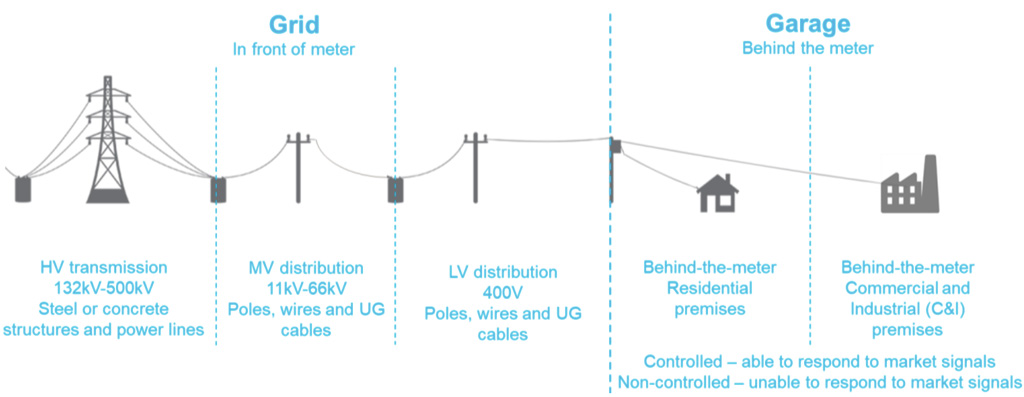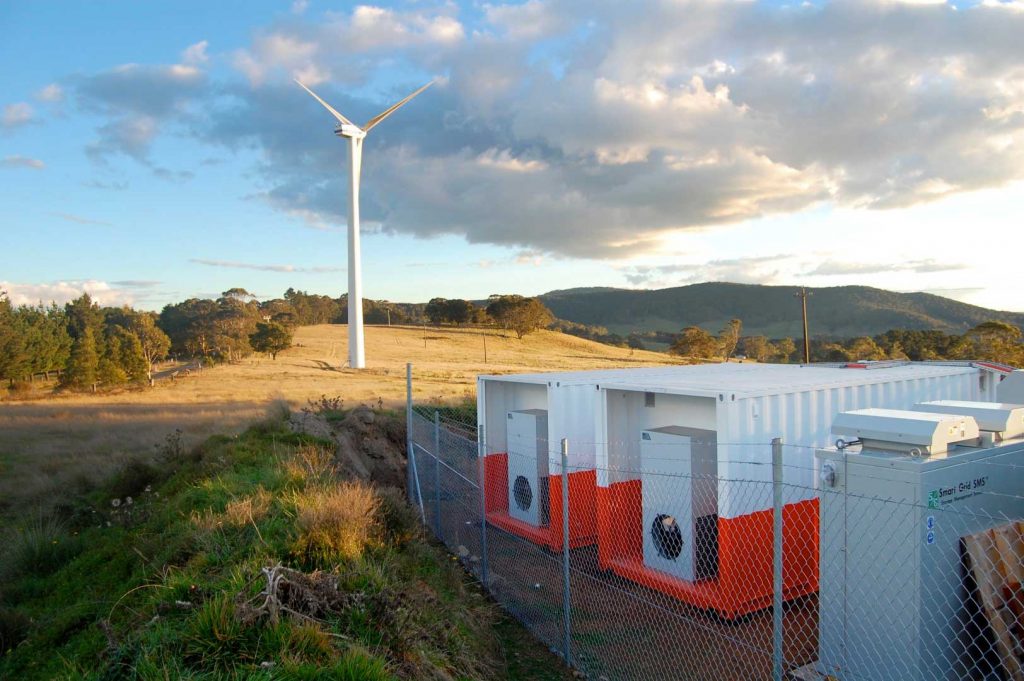Is big really better when it comes to batteries?
Can a fleet of home batteries deliver the same benefits as large storage connected to the network or a generator?

To find out, ARENA engaged consulting firm AECOM to explore the pros and cons of deploying battery storage at different points in the electricity network.
With AEMO forecasting that a massive volume of energy storage will be needed within the next two decades to support a grid dominated by renewables, the merits of different technologies are being hotly debated.
On face value it makes sense to add storage to the nearly 2.2 million solar households around the country, but can virtual power plants of aggregated “garage” batteries actually compete with a large scale “grid” installation?
What roles can batteries play in the transition to renewables?
To assess the value of the grid and garage options, AECOM looked at the range of services that batteries can offer and their economic value, both for the electricity system and the battery owner. This included:
- Load shifting,
- Consumer bill management
- Frequency stability services
- Voltage support services
- Reliability and backup power.
Some of the benefits are more obvious than others. Of course batteries can store wind and solar power to cover lulls in generation, but they can also inject power into the grid with lightning speed to keep the lights on if there is a major outage. The first handful of grid scale batteries have proven effective at regulating the frequency and voltage of the network, and behind the meter storage is saving consumers money on their electricity bills.
These services are helping to make the most of variable renewable generation and avoiding, or at least deferring, the need for investment in new electricity generation and transmission infrastructure. There are also fuel savings from the reduced demand for fossil fuel generators, both in meeting day-to-day supplies and particularly expensive occasional peaks.
Which battery energy storage system configuration is best?
The study considered seven different scenarios — three placing batteries in front of the meter in the high, medium and low voltage network, and four looking at different behind the meter installations for residential and commercial applications.

To view the full figure, refer to Executive Summary, page iii of the Grid vs Garage report.
The project found that both grid and garage batteries offer benefits for the electricity market and owners, but that positioning them on the low voltage network was the most effective option. This allows expenditure on distribution upgrades to be deferred, creating the most value for the electricity system.
However, the study found that the system and commercial benefits did not align, with battery storage in the medium voltage network able to provide the most commercial value. The authors speculate that this is a possible reason for the limited investment in battery storage in the low voltage network across the NEM to date.
For garage systems, batteries that can be controlled remotely to respond to network signals offer greater benefits to the system and higher commercial returns.
Both grid and garage batteries can help to defer investment in new generation and transmission, reduce transmission and distribution losses and lessen the amount of unserved energy (demand that cannot be met in a particular region).

While both can compete to deliver the services that lead to these results, there are other benefits that each are uniquely positioned to deliver. For example, grid batteries can maximise the use of electricity from utility scale wind and solar, where garage batteries capture the most value from rooftop solar.
Grid storage can reduce the fuel bill for gas peaking plants, where garage batteries can lessen diesel bills for industrial or commercial sites which rely on generators.
Installed in strategic locations, grid batteries can delay capital expenditure in distribution networks, while garage systems can provide direct electricity bill savings for households.
What does this mean?
The report highlights some of the implications from the findings for policy makers, network operators, market bodies and battery owners.
Given the market is growing at both the grid and garage scale, the authors state a need to balance the installation of small and utility scale storage to service the particular roles they can play.
Recognising that large scale batteries can support the operation of the electricity system, they say supporting projects to access competitive finance will help more to be built.
Equity issues are also flagged if tariffs rewarding battery owners for services that benefit the system increase the cost of electricity for those without solar or batteries.
Read the Grid vs Garage report.
LIKE THIS STORY? SIGN UP TO OUR NEWSLETTER

ARENA